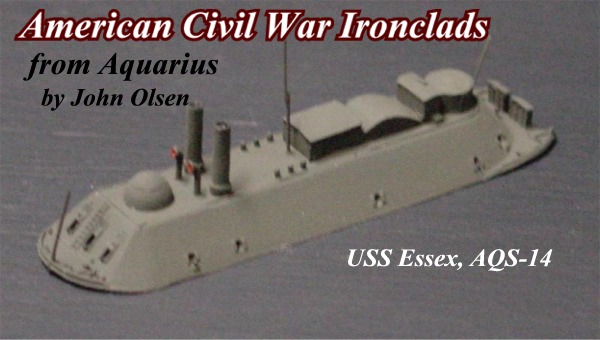 |
 |
The newly released Aquarius models of Chicora, Choctaw and Essex arrived in yesterday's mail and fully lived up to my expectations. Civil War fans should delight in these three gems: clean, sharp castings well researched and accurately modeled, and covered in a thin coat of paint that does not obscure detail. Each comes with a brief note (in German) on the history and vital statistics of the vessel, along with citations of the source material used in designing the model. For those not familiar with the Aquarius line, it is known mainly for its high quality models of 17th-18th century European sailing warships, although a few steamers, ironclads and other miscellaneous types are occasionally produced.
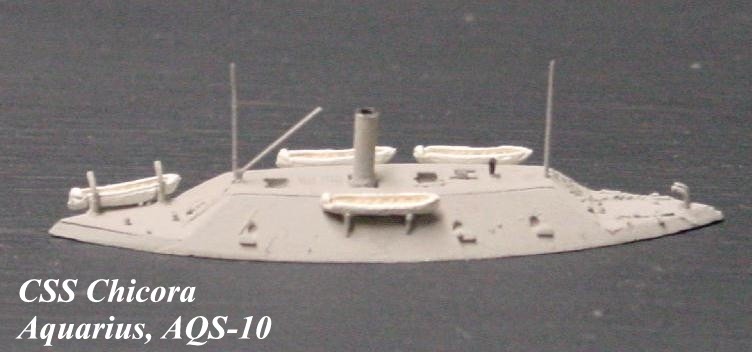 |
Chicora (AQ-S-10), one of a class of 6 ironclad rams built by the Confederate States as improved versions of the famous Virginia (ex Merrimack) was completed late in 1862, and, together with her sister Palmetto State, defended Charleston harbor against Federal blockading forces until scuttled in February, 1865, just prior to the fall of the city. Her design featured a broadside armament mounted within the sloping armored casemate, typical of most Confederate ironclads. The model is shown with open gun-ports, detailed hatches, ladders and boats, and like most of the ships defending Charleston, is painted light gray.
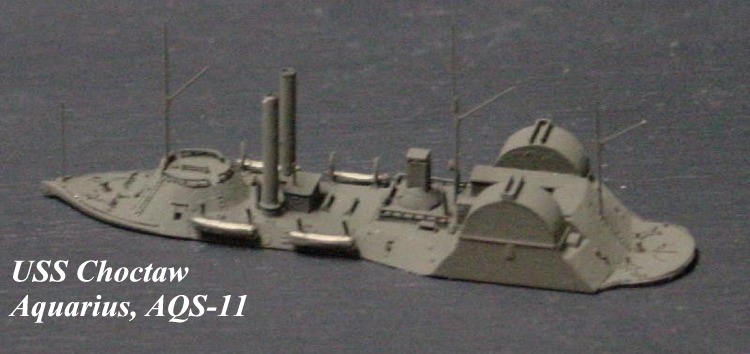 |
Choctaw (AQ-S-11), originally built as a river steamer in 1856, was taken in hand by Union forces in September, 1862, for conversion into one of the most powerful ironclads on the Mississippi. Her novel design was modified several times during construction to reduce weight. On completion she presented an unusual wasp-like silhouette, with her main armament inside a sloped circular rubber-backed armored casemate forward, two tall funnels abreast amidships, and a tall, lightly armored pilot house between two enormous sidewheels aft, that were protected by heavily timbered paddle boxes. Her varied armament was supplemented with a heavy ram, but her top speed of only 4 knots limited its effectiveness. Choctaw saw action against the Vicksburg batteries and on the Red River, and was not sold until 1866. The model is finely detailed with open gun-ports, photo-etch railings and slender wire masts that are true to scale. The dark gray paint seems accurate enough when compared to the several good photo images of the ship that have survived. At 1,004 tons and 270ft in length, she was a substantial vessel, a fact not always appreciated, but which is clearly evident when this large model is placed next to its smaller consorts.
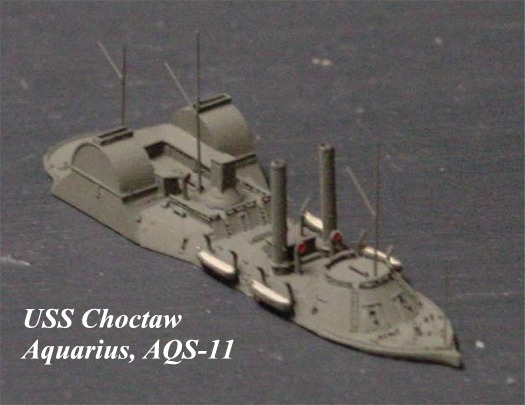 |
Essex (AQ-S-15) was a converted St Louis river ferry with a single funnel, center paddle wheel and catamaran hull. Taken into service by the Union Army early in the War, she was partially armored late in 1861 (the first U.S. ship afloat to be so treated). Essex was completely rebuilt and enlarged early in 1862, with new engines, paired funnels and a 2-level armored casemate. She retained her center wheel but received a new dome shaped armored pilot-house at the forward end of the casemate. She saw extensive service on both the Mississippi and Red Rivers, and was sold late in 1865. The model depicts the ship in her late war fit after topside cabins had been added forward and aft of the wheel housing, and is finished in the same dark gray with the same level of detail and accuracy as Choctaw.
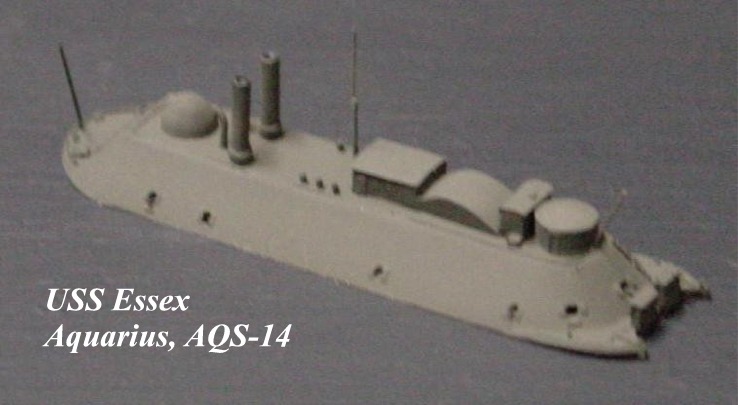 |
Aquarius models come tied to a cardboard or wood base and require extra care to unpack. Raised bulwarks are especially thin and can be easily damaged. New releases come at about 2-4 models per year, and, though relatively expensive, are well worth the cost.
____________________________________________________________________________________________________________